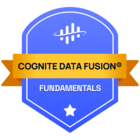I have a question about contextualization.
In my setup, I have a functional location with a machine, and under the machine, there's a sub-station. When I contextualize a document related to the sub-station, why isn't it directly linked to the machine level and the functional location? I understand that I manually contextualize it to the specific station, but since the station is part of the machine and the functional location, it should appear there too.
I think there's a missing link in my data modeling between the functional location, machine, and sub-station. What methods can I use to ensure that when I contextualize a document, it shows up at all levels of the hierarchy linked to that machine?


 Check the
documentation
Check the
documentation Ask the
Community
Ask the
Community Take a look
at
Academy
Take a look
at
Academy Cognite
Status
Page
Cognite
Status
Page Contact
Cognite Support
Contact
Cognite Support




